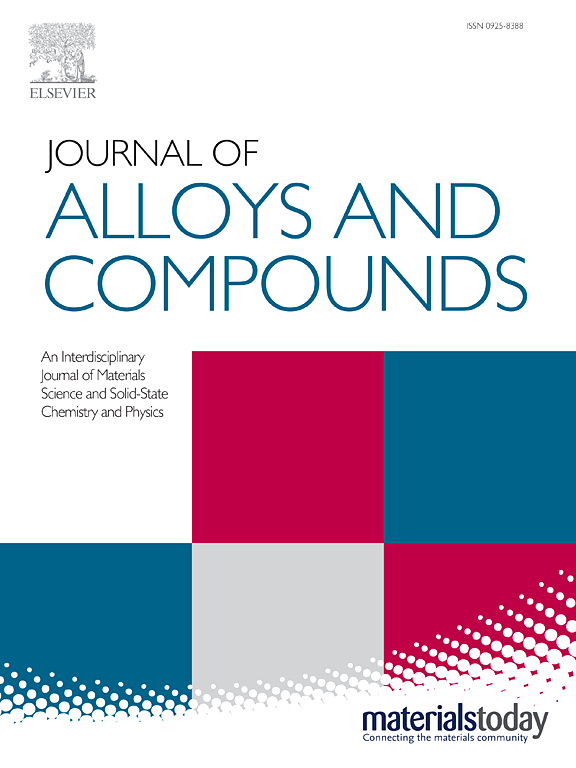Microstructure evolution and mechanical property of TiCp/Ti6Al4V composites manufactured using laser metal deposition assisted by synchronous ultrasonic impact treatment
IF 5.8
2区 材料科学
Q2 CHEMISTRY, PHYSICAL
引用次数: 0
Abstract
In this work, synchronous ultrasonic impact treatment (UIT) is proposed to regulate the microstructure and enhance the mechanical property of TiCp/Ti6Al4V composites prepared by laser metal deposition (LMD). The results showed that the columnar to equiaxed transition (CET) of prior β-Ti was completed under the effect of UIT with a grain size reduction of approximately 47.27 %. The α-Ti grains were refined and their preferred orientation was significantly weakened. Furthermore, UIT promoted the isotropic growth of in-situ TiC, and the rod-like TiC was replaced by granular TiC. Compared with the LMD sample, the TiC in the LMD-UIT sample exhibited a higher carbon content and a growth orientation along the α-Ti close-packed directions. The orientation relation of []α-Ti // []TiC, (100)α-Ti // (1)TiC for the LMD sample transformed to []α-Ti // []TiC, (0002)α-Ti // (11)TiC for the LMD-UIT sample, the α-Ti/TiC interface in both samples was semi-coherent with low strain energy. The contribution values of grain refinement strengthening, dislocation strengthening and TiC precipitation phase strengthening were calculated as 44 MPa, 5 MPa and 2.1 MPa, respectively, among these, grain boundary strengthening was the dominant factor affecting the mechanical property of TiCp/Ti6Al4V composites, meanwhile, uniform plastic deformability by randomly oriented grains and the relief of localized stress concentration by granular TiC were also beneficial to enhance the plasticity of composites. The excellent yield strength, ultimate tensile strength, and elongation of the LMD-UIT samples were 1079 MPa, 1134 MPa, and 3.3 %, with an increased ratio of 8 %, 6 %, and 32 %, respectively. This work offers a novel approach for refining the microstructure and enhancing mechanical property of TiCp/Ti6Al4V composites using ultrasonic impact treatment assisted laser metal deposition.
求助全文
约1分钟内获得全文
求助全文
来源期刊

Journal of Alloys and Compounds
工程技术-材料科学:综合
CiteScore
11.10
自引率
14.50%
发文量
5146
审稿时长
67 days
期刊介绍:
The Journal of Alloys and Compounds is intended to serve as an international medium for the publication of work on solid materials comprising compounds as well as alloys. Its great strength lies in the diversity of discipline which it encompasses, drawing together results from materials science, solid-state chemistry and physics.
 求助内容:
求助内容: 应助结果提醒方式:
应助结果提醒方式:


